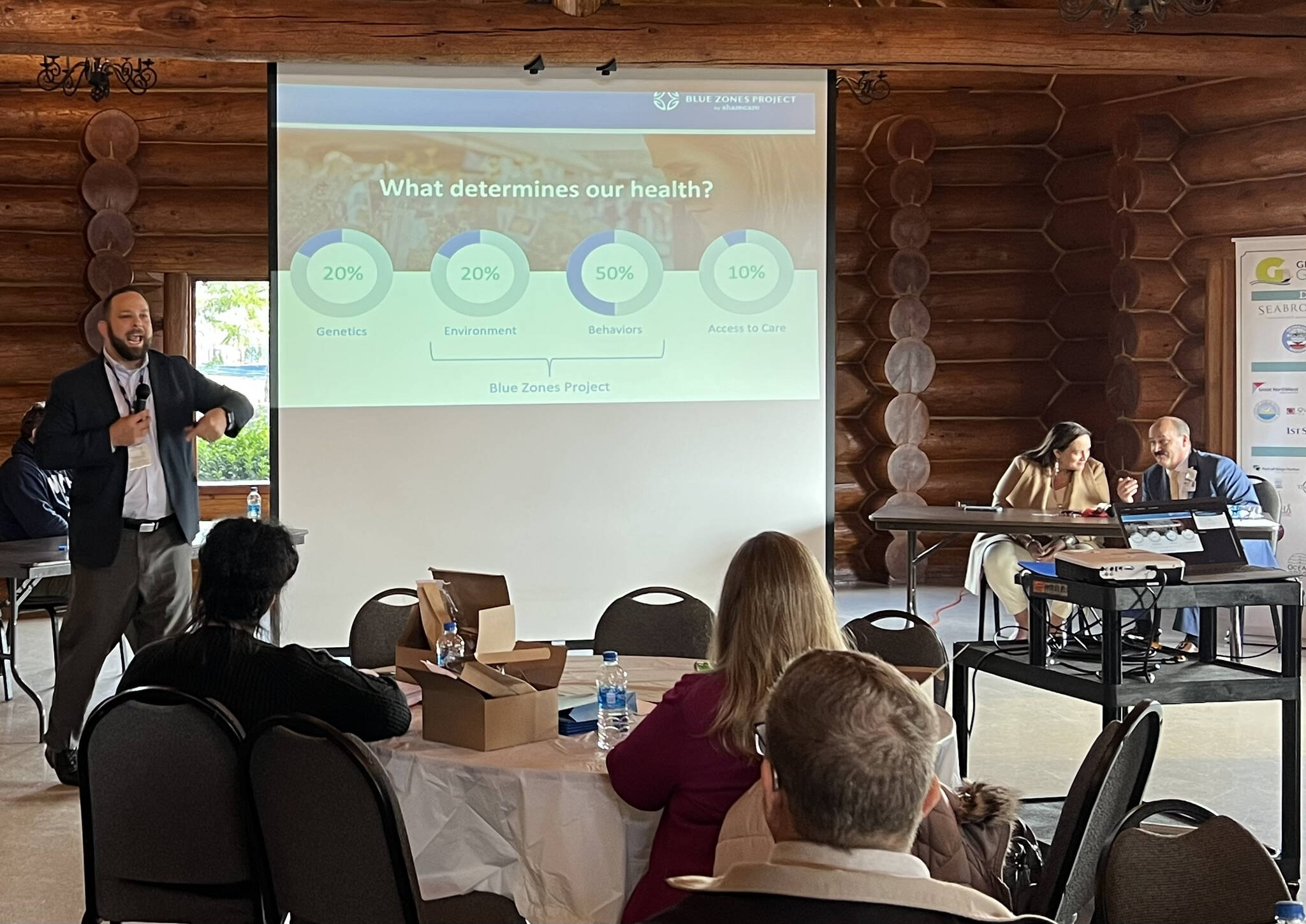A panel of Grays Harbor health officers, public officials and business leaders met Tuesday to discuss the status of health on The Harbor, as well as the challenges — and potential remedies for those challenges — facing local healthcare providers, including staffing shortages, opioid use and a lack of behavioral health treatment options.
Greater Grays Harbor Inc. hosted the event at the Rotary Log Pavilion in Aberdeen. The panel featured speakers Josh Martin, CEO of Summit Pacific Medical Center in Elma; Tom Jensen, CEO of Harbor Regional Health in Aberdeen; Christine Winn, CEO of Quinault Nation Enterprise Board; and Mike McNickle, director of Grays Harbor County Public Health.
Both Martin and Jensen detailed the way hospital staff shortages have affected their operations.
Martin said a lack of healthcare workers strained his facility to the brink of failure late last year, nearly forcing Summit Pacific to close its acute care unit, which provides emergency service.
He said the hospital almost declared diversionary status, meaning it would have to send patients needing emergency care to places with more services.
Diversionary status for Summit Pacific would’ve forced EMS to “drive up and down I-5 looking for a hospital that’s open,” he said, if it weren’t for help from FEMA at the time that kept the hospital running.
“That’s the reality that existed a year ago, but it hasn’t changed,” Martin. “We still have workforce shortages. The volume is too high, relative to the resources, to be able to care for (patients) effectively.”
And while the near-closure happened just before a spike in the COVID-19 Omicron variant last winter, Martin emphasized that staffing shortages weren’t caused by the pandemic.
“That’s the narrative you hear, but if you actually look at the trends, we were on a projection to have a nursing shortage for over a decade, if not decades,” Martin said. “COVID just exacerbated it.”
Tom Jensen, CEO of Harbor Regional Health in Aberdeen, said the healthcare staffing shortage isn’t Harbor-specific, but nationwide, and that solving the problem is more complicated than just “hiring more nurses.”
“Everybody is saying the same thing: They just aren’t there,” Jensen said.
Jensen explained that the doctors and nurses of the baby boomer generation are retiring — and, along with the rest of their proportionally large population, are increasingly in need of healthcare — but aren’t being replaced by workers from the younger generation.
Jensen said he has worked with Grays Harbor College and local school districts on outreach to classrooms to get students excited about healthcare, an effort he described as “growing our own” healthcare workers.
“If you have family or friends, relatives or high school students that are even thinking about (working in) healthcare, now’s the time to put pressure on them,” Jensen said.
Martin also said the hospital is starting to invest in scholarships for local high school students in hopes to create a “grassroots” movement of medical students.
Summit Pacific partnered with an Olympia hospital to form the Providence St. Peter-Summit Rural Family Medicine Program, a residency program for medical students, which Martin hopes will “help the ability to grow students locally.” He said the program’s goal is to grow four residents each year.
Grays Harbor Regional Health’s residency program also provides practical training for recent medical graduates in the acute care setting.
Another potential workforce solution could lie abroad. Martin said immigration policy has been a recent focus of his, with a hope to “get more nurses from outside the United States into the U.S. and even here to Grays Harbor County.”
“We actually have some nurses joining us in the coming months from foreign countries,” Martin said.
While educational and residency programs could eventually provide a larger and more youthful healthcare workforce, getting those workers to stay in Grays Harbor is a different task, and potentially a more difficult one.
According to data from County Health Rankings and Roadmaps, Grays Harbor’s overall population increased during the pandemic. The opposite is true among young people, according to the data Martin presented during his presentation at the pavilion. The Harbor’s population in the 20-44 year-old age group is projected to decline from 2020 to 2025.
Martin said he suspected that larger societal factors — jobs, schools and childcare — were all culprits for the young Harborite diaspora, which he labeled “an economic problem.”
Ultimately, Martin said, solving the hospital staffing problem, to a certain extent, will take rebuilding the healthcare system, and will require actions from the Legislature.
“We literally have to rebuild our infrastructure that has been hit so hard,” Martin said. “Not just the facilities, but the human capital and the human infrastructure.”
Contact reporter Clayton Franke at 406-552-3917 or clayton.franke@thedailyworld.com.



